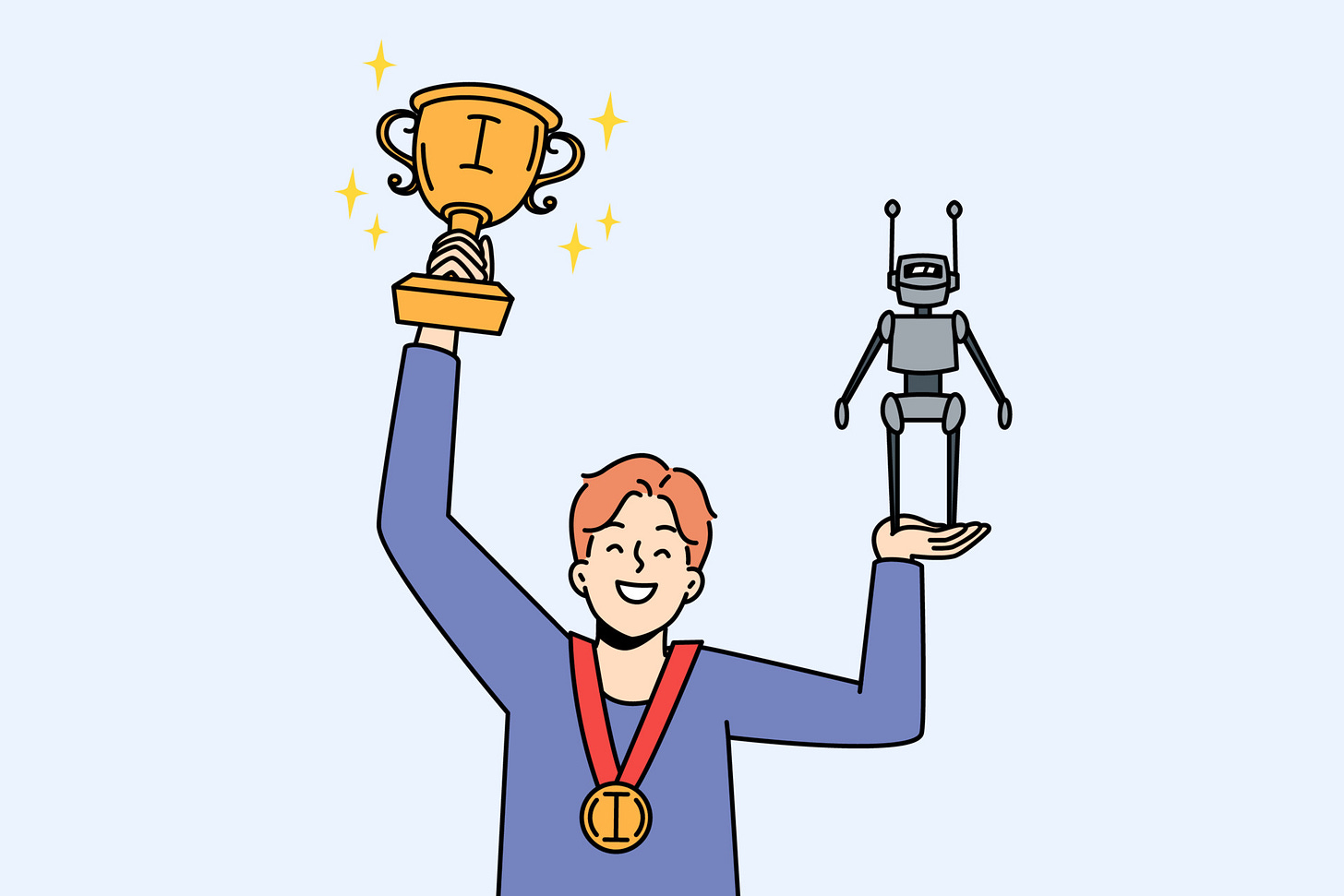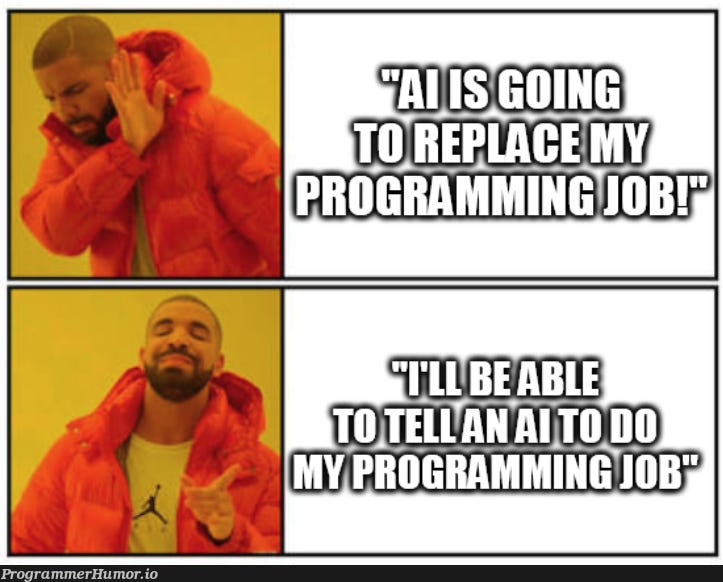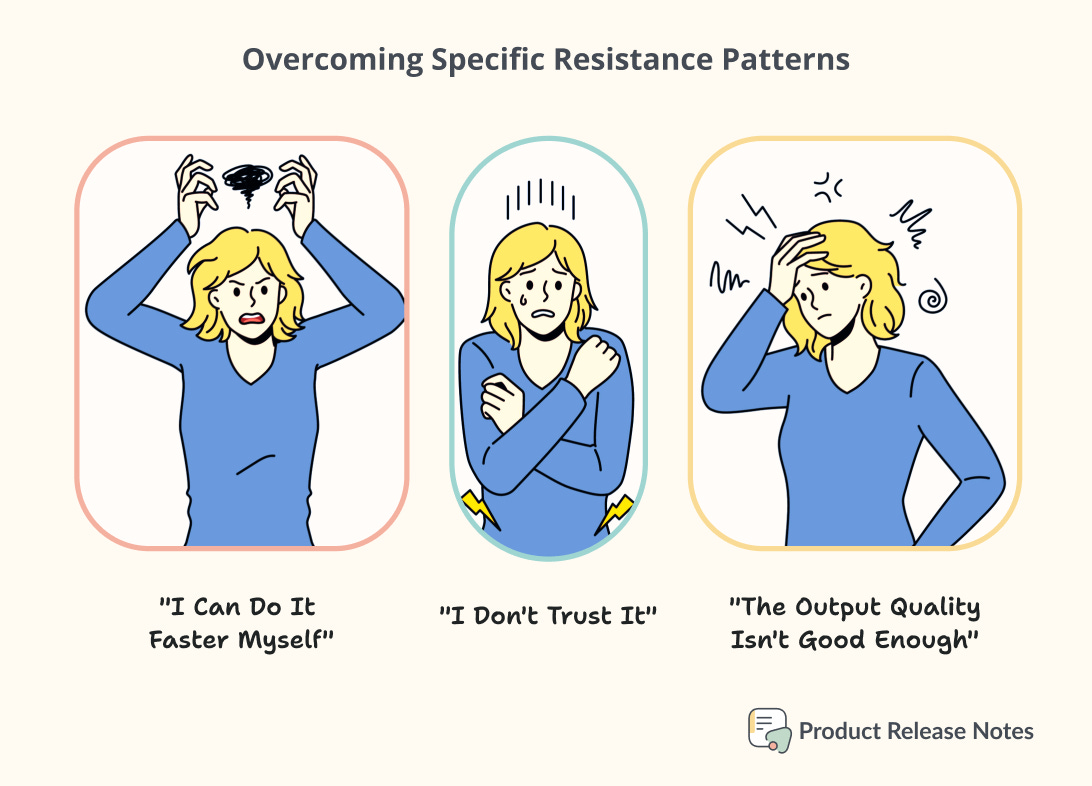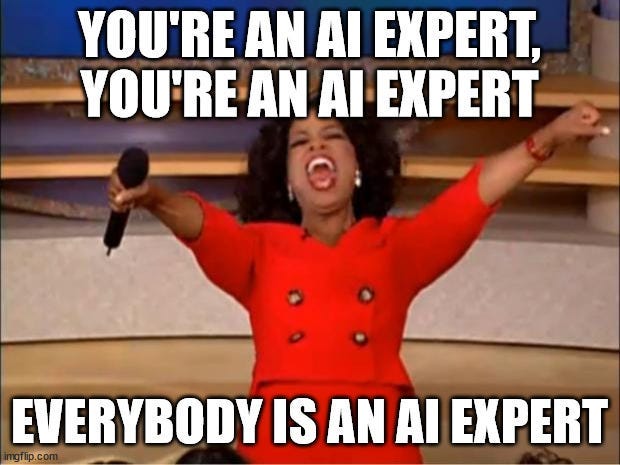How To Help Your Team Overcome AI Resistance And Embrace Change
You know what the problem is with most AI adoption initiatives? They focus on tools instead of people.
I've seen companies and product managers announce shiny new AI platforms to rooms full of skeptical developers, QA engineers, and designers. They talk about efficiency gains and competitive advantages, but they miss the most important ingredient: the human spark that turns resistance into enthusiasm.
Here's the reality: Your team doesn't need another tool to learn.
They need to believe that AI will make their jobs better, not threaten their existence. And as a leader, illuminating that spark resides on our shoulders.
But the most successful AI adoptions don't start with mandates from leadership. They start with curiosity from individuals who see a genuine opportunity to improve their daily work.
Understanding The Real Barriers (It's Not What You Think)
Before moving on to strategies, we must recognize what we are really up against. Most managers think that resistance to AI is due to fear of job loss. While that is part of the problem, the underlying issue is much more nuanced.
The real barriers I see consistently across teams:
🧠 Cognitive overload rather than genuine fear. Some professionals are already juggling multiple priorities and feel overwhelmed by the pace of change. AI feels like one more thing to master on top of everything else!
🫠 Past disappointment with overhyped technologies. Your team may have seen countless "revolutionary" tools that promised to transform their work but delivered marginal improvements at best.
💵 Lack of clear personal benefit. While you see the strategic value, individual contributors struggle to understand how AI will specifically help them with their current challenges.
This means your approach needs to be fundamentally different from typical technology rollouts.
You don't just introduce new tools, you help people reimagine the way they work.
The Psychology Behind Successful AI Adoption
Here's what successful product leaders understand:
👉 Motivation isn't about external pressure or incentives. It's about creating conditions where people naturally want to explore and experiment.
Research from Harvard Business Review reveals something interesting about AI adoption. While generative AI makes people more productive, it can paradoxically make them feel less motivated when they return to tasks without AI assistance. What does this means?
It means… that once people experience the genuine benefits of AI, they don't want to go back to the old way of working.
💡 The key insight: Start with immediate, tangible benefits rather than long-term strategic goals. When a developer saves two hours on documentation, or a designer generates ten concept variations in minutes instead of days, the value becomes undeniable.
But this can't be a top-down mandate or request:
People need to discover these benefits organically through practical experience.

The Spark Strategy
Starting With Individual Champions
The most effective approach I've seen follows what I call the "Spark Strategy." Instead of company-wide rollouts, you identify and nurture individual champions who become internal advocates for AI adoption.
Phase 1: Identify Natural Experimenters
In every team, there are people who naturally gravitate toward new tools and approaches (like you and me 😉). These aren't necessarily your most senior people, sometimes they're mid-level contributors who are curious and willing to experiment.
Look for team members who:
Ask questions about new technologies during meetings
Share interesting articles or tools with colleagues
Express frustration with repetitive aspects of their current work
Show enthusiasm for learning and professional development
Phase 2: Create Safe Experimentation Spaces
Once you've identified potential champions, create environments where they can explore AI tools without pressure or judgment. This might mean:
Allocating dedicated "exploration time" during sprints
Setting up internal AI tool sandboxes with company-approved platforms
Creating small pilot projects with minimal risk
Establishing "failure-friendly" zones where experiments that don't work out are celebrated as learning opportunities
Phase 3: Document and Share Success Stories
When champions discover genuine value, help them document and share their experiences, but let them tell the story in their own words. Authentic peer testimonials are infinitely more powerful than leadership presentations. It's like having coffee with a friend and exchanging experiences! ☕️
Tailored Approaches For Different Roles
Each role on your product team faces unique challenges and opportunities with AI. Your approach needs to be specific to their daily realities.
👨🏻💻 For Developers:
Ease resistance by starting with AI tools that assist in code review and documentation (something less threatening than full code generation 😉). Try "AI pair programming" sessions so they can explore limitations and advantages together. Framing AI as a collaborator that handles repetitive tasks empowers developers to focus on architecture and creative problem-solving.
👷♀️ For QA Engineers:
Highlight how AI expands test coverage and handles tedious tasks like regression testing, letting QAs focus on exploratory work. Share real time-saving wins (e.g., running 100+ prompts in minutes) to make benefits concrete. Recognize those who use AI for improved coverage and fewer escaped bugs.
🧑🎨 For UX Designers:
Show that AI boosts, not replaces, creativity. Use it for research analysis, rapid prototyping, and generating layout variations, letting designers apply their judgment to the best results. Emphasize that AI can make design more inclusive and consistent without extra effort.
In all cases, the goal is to help each group see how AI makes their daily work easier and more impactful, not less human. 🤖
Creating Positive Feedback Loops Through Recognition
Here's where most AI adoption efforts fail: they focus on adoption metrics instead of success stories. The most effective approach creates positive feedback loops through strategic recognition and celebration.
Recognition Strategy 1: Highlight Process Improvements
When someone uses AI to solve a problem or improve a process, make it visible to the broader team. But focus on the outcome, not the tool usage.
❌ Instead of: “Larah used ChatGPT to write user stories"
✅ Try: “Larah found a way to reduce story writing time by 60% while improving acceptance criteria clarity"
This approach celebrates the problem-solving thinking while naturally introducing others to the possibility of using AI tools.
Recognition Strategy 2: Create Learning Moments
Transform individual successes into team learning opportunities. When someone discovers a particularly effective AI workflow, create space for them to share it with others.
Consider implementing:
Monthly "AI Discovery" sessions where team members share useful approaches they've found
Internal documentation of successful AI workflows with specific use cases
Peer mentoring programs where AI-comfortable team members help others explore tools
Recognition Strategy 3: Connect AI Usage to Career Development
Some of the most forward-thinking companies are beginning to recognize AI literacy as a professional development opportunity. They're creating explicit connections between AI adoption and career advancement.
This doesn't mean mandating AI usage, but rather creating paths for people who want to develop these skills to be recognized and rewarded for doing so.
Overcoming Specific Resistance Patterns
Even with the best approach, you'll encounter predictable resistance patterns. Here's how to address the most common ones:
"I Can Do It Faster Myself" Syndrome
This is particularly common among experienced professionals who have optimized their current workflows. The key is helping them understand that speed isn't the only benefit.
Response strategies:
Focus on quality improvements rather than just speed
Show how AI can help them explore options they wouldn't have considered
Demonstrate AI's ability to handle tasks they typically postpone or avoid
"The Output Quality Isn't Good Enough" Concern
This often stems from unrealistic expectations about AI capabilities. Address it by setting appropriate expectations and showing how to use AI as a starting point rather than a final solution.
Response strategies:
Frame AI as a "first draft" generator that still requires human expertise to refine
Show examples of iterative improvement through AI collaboration
Emphasize that AI amplifies human judgment rather than replacing it
"I Don't Trust It" Hesitation
Trust issues often come from AI's "black box" nature. People are more comfortable with tools they understand.
Response strategies:
Start with transparent, explainable AI applications
Encourage experimentation with low-stakes tasks first
Show how to verify and validate AI outputs rather than blindly trusting them
Building Long-Term AI Literacy
Here's something most product leaders miss: AI adoption isn't a project with a completion date. It's an ongoing capability that needs to evolve with your team and the technology itself.
Create sustainable learning systems:
Continuous learning budgets specifically for AI tool exploration and training. This signals that AI literacy is an ongoing investment, not a one-time initiative.
Internal AI communities of practice where people can share discoveries, ask questions, and learn from each other's experiences.
Regular AI literacy assessments that help team members understand their current capabilities and identify areas for growth.
Partnership with AI vendors and communities to stay current with emerging tools and best practices.
The Compound Effect of AI-Enabled Teams
When you get this right, something remarkable happens. AI adoption creates a compound effect where each person's increased capability amplifies the entire team's performance.
For example, at my company, our product teams have reduced feature development cycles around 20% while improving quality metrics. QA engineers are discovering hidden bug patterns that have led to significant architecture improvements.
But the real magic happens in the spaces between roles. When developers can quickly generate documentation, designers can rapidly prototype concepts, and QA engineers can create comprehensive test suites, the entire product development process becomes more fluid and collaborative.
Wrapping Up
Your Next Steps To Ignite the AI Adventure
The beauty of this approach is that you can start implementing it immediately, without waiting for company-wide AI strategies or budget approvals.
This week:
Identify 2-3 natural experimenters on your team
Have informal conversations about their current workflow pain points
Share one concrete example of how AI might address a specific challenge they mentioned
This month:
Set up small pilot projects with minimal risk but high learning potential
Create space in your team rituals for sharing interesting discoveries
Start documenting and celebrating process improvements, regardless of the tools used
This quarter:
Develop internal AI literacy resources based on what your team is actually finding useful
Create recognition systems that connect AI adoption to career development
Establish feedback loops that help you understand what's working and what isn't
Remember, you're not trying to convince everyone to become AI experts overnight. You're creating conditions where curiosity and experimentation naturally flourish. You're lighting a spark that can grow into sustainable, transformative change.
The teams that will thrive in the AI era aren't necessarily the ones with the most advanced tools. They're the ones with the most adaptable, curious, and collaborative cultures.
And that's something you can start building today.
The spark you light today becomes the competitive advantage your product team relies on tomorrow. The question isn't whether AI will transform how your team works. The question is whether you'll lead that transformation or let it happen to you.
👉 Start with one person, one small experiment, one genuine success story. The rest will follow naturally, because that's how real cultural change always happens: one spark at a time. 🌟
What do you think of this adoption of Artificial Intelligence? How is your company promoting the learning of this skill? Let us know in the comments!





Great post! Thanks for sharing. I’m going through a similar adventure with my org now. And it’s really interesting to see how different people respond. I saw the same three key responses the first time I showed an AI generated prototype- people didn’t trust it, wanted to make it again themselves. So then I showed them how I did it and started bringing them along for the ride and now they’re excited.